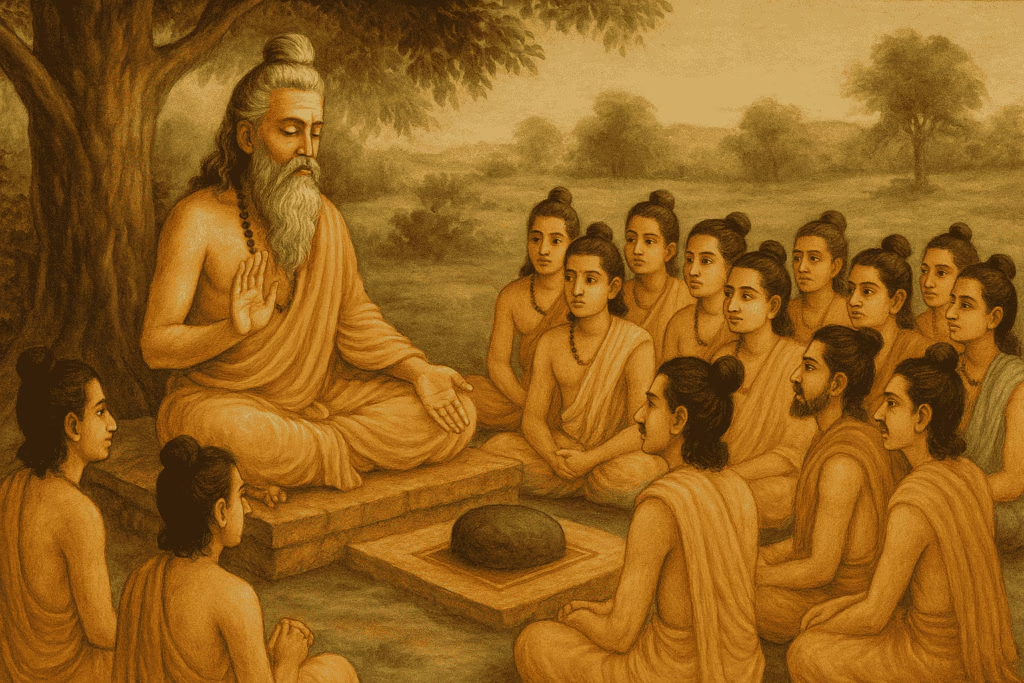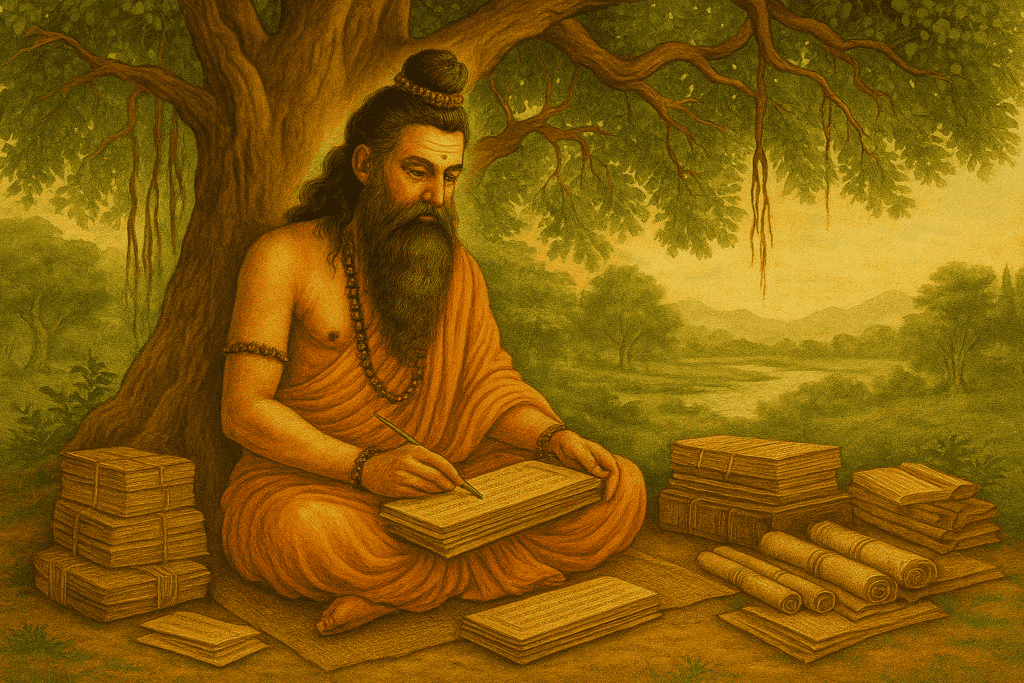Guru Purnima: Honoring the Eternal Light of Knowledge

Guru Purnima, a spiritually significant festival celebrated across India and in various parts of South Asia, pays tribute to teachers and mentors—those who guide us from darkness to light. Rooted deeply in ancient Indian tradition, the festival transcends religious boundaries and is marked with reverence by Hindus, Buddhists, and Jains alike. It is not just a celebration of individuals who teach academic knowledge but an acknowledgment of all those who impart wisdom, discipline, values, and inspiration.
This article explores the history, cultural context, rituals, and the enduring significance of Guru Purnima in contemporary times.
The Historical Roots of Guru Purnima
The word Guru is derived from Sanskrit where “Gu” means darkness and “Ru” means remover. Thus, a Guru is the one who removes the darkness of ignorance and brings the light of knowledge.
Guru Purnima falls on the full moon day (Purnima) in the Hindu month of Ashadha (June–July). The day has multiple historical and spiritual origins:
1. Veda Vyasa Jayanti
One of the most widely accepted origins of Guru Purnima is its association with Maharishi Ved Vyasa, the sage who compiled the Vedas, authored the Mahabharata, and contributed to many Puranas. It is believed that on this full moon day, he was born or completed his monumental literary work. As a mark of respect to him, the day is also called Vyasa Purnima. He is considered the Adi Guru (original teacher) in the lineage of Indian spiritual tradition.
2. The Buddha’s First Sermon
For Buddhists, Guru Purnima commemorates the day Gautama Buddha gave his first sermon at Sarnath, after attaining enlightenment. It was here that he set the Wheel of Dharma (Dharmachakra Pravartana) in motion by teaching the Four Noble Truths to his five former companions. Thus, in Buddhist tradition, Guru Purnima marks the birth of Sangha (community of monks).
3. Jain Tradition
In Jainism, Guru Purnima is associated with Lord Mahavira, the 24th Tirthankara. It is believed that on this day, he made Indrabhuti Gautama his first disciple or Ganadhara, establishing the Guru-disciple tradition within Jain spiritual orders.

Cultural Significance and Traditions
Guru Purnima has evolved as a powerful cultural observance, where disciples express their gratitude towards teachers—whether spiritual masters, academic instructors, or personal mentors.
1. The Guru-Shishya Parampara
The cornerstone of Indian culture is the Guru-Shishya (teacher-disciple) tradition, a timeless relationship that goes beyond mere instruction. In ancient times, knowledge—whether Vedic hymns, music, martial arts, or scriptures—was imparted orally in Gurukuls (residential learning institutions). The Guru was not only a teacher but a parental figure, a guide, and a role model.
On Guru Purnima, disciples honor this relationship through acts of devotion, remembrance, and service. Students visit their Gurus to offer gifts (Guru Dakshina), seek blessings, and express reverence.
2. Spiritual Observances
In ashrams and spiritual centers, Guru Purnima is celebrated with pujas (ritual worship), satsangs (spiritual gatherings), and bhajans (devotional songs). Special discourses and readings from sacred texts are organized to emphasize the Guru’s role in guiding seekers on the path of liberation.
In traditions like Sri Ramakrishna Mission, ISKCON, Art of Living, and Isha Foundation, the day holds immense significance, often marked with mass meditations, rituals, and spiritual talks.
3. Fasting and Self-Reflection
Many devotees observe fasting on Guru Purnima as a form of spiritual discipline. It is also considered an auspicious day for introspection, initiating new learning, or committing oneself to a spiritual practice. The full moon, symbolizing clarity and completeness, serves as a metaphor for the inner illumination that a Guru bestows.
https://sypertimes.com/ayodhya-ram-mandir-a-sacred-symbol-of-faith-and-heritage/
Modern Relevance of Guru Purnima
Though rooted in ancient tradition, Guru Purnima remains highly relevant in today’s world. As societies evolve and knowledge becomes more accessible, the fundamental need for guidance, values, and purpose remains unchanged.
1. Celebrating Academic Teachers
In contemporary India, schools and colleges observe Guru Purnima to honor teachers. Students present cards, organize cultural programs, and perform skits reflecting the teacher’s role in shaping young minds. It reinforces respect for educators and acknowledges their tireless efforts.
2. Workplace Mentorship
With the growing recognition of mentorship in workplaces, Guru Purnima is sometimes used as a day to appreciate mentors in professional settings—those who shape careers, offer wisdom, and lead by example.
3. Parenting as a Form of Guidance
Many also reflect on the role of parents as primary Gurus—the first teachers who instill basic values, behavior, and life skills. Guru Purnima, thus, becomes a day of familial gratitude and bonding.

The Deeper Symbolism of the Guru
In philosophical terms, a Guru is not just a person but a principle—the inner compass that leads one from ignorance (Avidya) to knowledge (Vidya). In the Bhagavad Gita, Lord Krishna acts as a divine Guru to Arjuna, offering timeless wisdom on duty, righteousness, and liberation.
The Guru is sometimes described as:
गुरुर्ब्रह्मा गुरुर्विष्णुः गुरुर्देवो महेश्वरः। गुरुः साक्षात् परब्रह्म तस्मै श्री गुरवे नमः॥
“Guru Brahma, Guru Vishnu, Guru Devo Maheshwara
Guru Sakshat Param Brahma, Tasmai Shri Gurave Namah”
Which means: “The Guru is the creator (Brahma), the preserver (Vishnu), and the destroyer (Shiva); the Guru is the supreme reality. I offer my salutations to that Guru.”
How Guru Purnima is Celebrated Across India
- In Maharashtra, followers of Sai Baba and Dattatreya tradition celebrate the day with great devotion.
- In Sikkim and Ladakh, Buddhist monks hold sermons and rituals in monasteries.
- In Tamil Nadu and Karnataka, spiritual institutions conduct day-long discourses, processions, and meditation sessions.
- In Uttar Pradesh, especially in Varanasi and Sarnath, Guru Purnima is marked with Buddhist teachings and events commemorating the Buddha’s first sermon.
Conclusion: A Timeless Tradition of Gratitude
In a world increasingly driven by material success and information overload, the significance of a Guru—one who fosters wisdom, ethics, and emotional maturity—cannot be overstated. Guru Purnima is a celebration of that eternal relationship, reminding us to pause, reflect, and honor those who have shown us the path.
Whether it’s the spiritual Guru who inspires inner transformation or the schoolteacher who sparked a lifelong love for learning, Guru Purnima invites us to express gratitude, humility, and reverence. In doing so, it keeps alive one of the most cherished aspects of Indian culture—the belief that knowledge is sacred, and the one who imparts it is divine.




